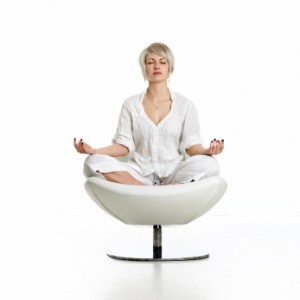 Mindfulness is a major component of Dialectical Behavior Therapy (DBT) and Cognitive Behavioral Therapy (CBT), which are both used to treat Borderline Personality Disorder (BPD). Through its long history, mindfulness has proven to be a beneficial practice for many people seeking ways to find balance and emotional stability in their day-to-day lives.
Mindfulness is a major component of Dialectical Behavior Therapy (DBT) and Cognitive Behavioral Therapy (CBT), which are both used to treat Borderline Personality Disorder (BPD). Through its long history, mindfulness has proven to be a beneficial practice for many people seeking ways to find balance and emotional stability in their day-to-day lives.
In this article, we further explore the practical application of mindfulness by examining some of the ways in which we can learn to enter a state of mindful awareness.
“The goal is to bring into awareness thoughts, emotions, behaviors … and become aware of your own experience with the idea that when we’re unaware of what goes on in our own mind, we are often just dragged around by our thoughts and emotions,” explained Dr. Gillian Galen during a recent National Education Alliance for Borderline Personality Disorder (NEA-BPD) call-in lecture.
For people with Borderline Personality Disorder, especially, mindfulness can truly help prevent impulsive behaviors based on emotional reactions to a distressing situation.
How to Begin a Mindfulness Practice
Before beginning a practice of mindfulness, it is important to commit to the process. Even committing to being mindful for two minutes each day can be a way to begin developing your skills. Liken it to training for a marathon, and slowly increase your time until you reach 20 minutes a day.
Choose a time of day that works for you. Think about when you are most likely going to be able to give your time and attention to your practice. Find a quiet spot, free of distractions, where you can be in the moment and mindful.
Mindfulness Exercise for Starters
Galen lead listeners through a two-minute exercise in mindfulness to demonstrate one of the many ways we can begin to teach ourselves to enter a more acute state of awareness. For two minutes, we were instructed to focus on breathing in a very specific way, beginning with counting our breaths (one for inhale and two for exhale), with each inhalation and exhalation increasing in duration from one second up to 10 seconds.
I had to stop at eight seconds, as 10 was beyond my capacity. But the importance isn’t on whether you can inhale and exhale for a set period of time, it is to focus on your breathing with your full attention.
Galen explained that simply sitting straight on a chair with your feet flat on the ground, palms in your lap, shoulders positioned so that your chest is open, and making sure you are on your sit bones is fine. You needn’t twist up into a complicated yogic posture to practice mindfulness.
Labeling vs. Judging
When we mindfully observe our thoughts and emotions, it is useful to label them accurately, said Dr. Blaise Aguirre during the NEA-BPD lecture. For instance, if you are experiencing emotional distress of some kind, you can sit and look at what is coming up for you in your mind and body.
“I feel tightness of breath, my stomach is churning, I am angry,” would all be factual observations, rather than judgments. Whereas thinking, “I know it’s stupid, but I feel hurt by what my mother said,” is judging your thoughts.
We cannot control our thoughts. Minds produce thoughts just as our hearts pump blood – automatically. Whether we put our attention and energy into our thoughts is a choice we make.
When thoughts arise during mindfulness practice, simply allow them to float in and float out without judging them. A thought is just a thought. Thinking “I am going to be fired from my job” in no way means that you will be fired from your job. It is just a thought and not a fact. Don’t give the thought more power by focusing on it. Let it come in and go out without doing more than noting “that was a thought.”
Still to Come
If you’re intrigued by what you’ve read so far, you can look forward to more information on mindfulness as we break down the remaining lectures in upcoming articles.




3 Comments
Pingback: Practicing Mindfulness: Learning to Let Go | Borderline Personality Treatment
Pingback: The Importance of Family in BPD Treatment
Pingback: 5 Ways to Practice Your Mindfulness Skills